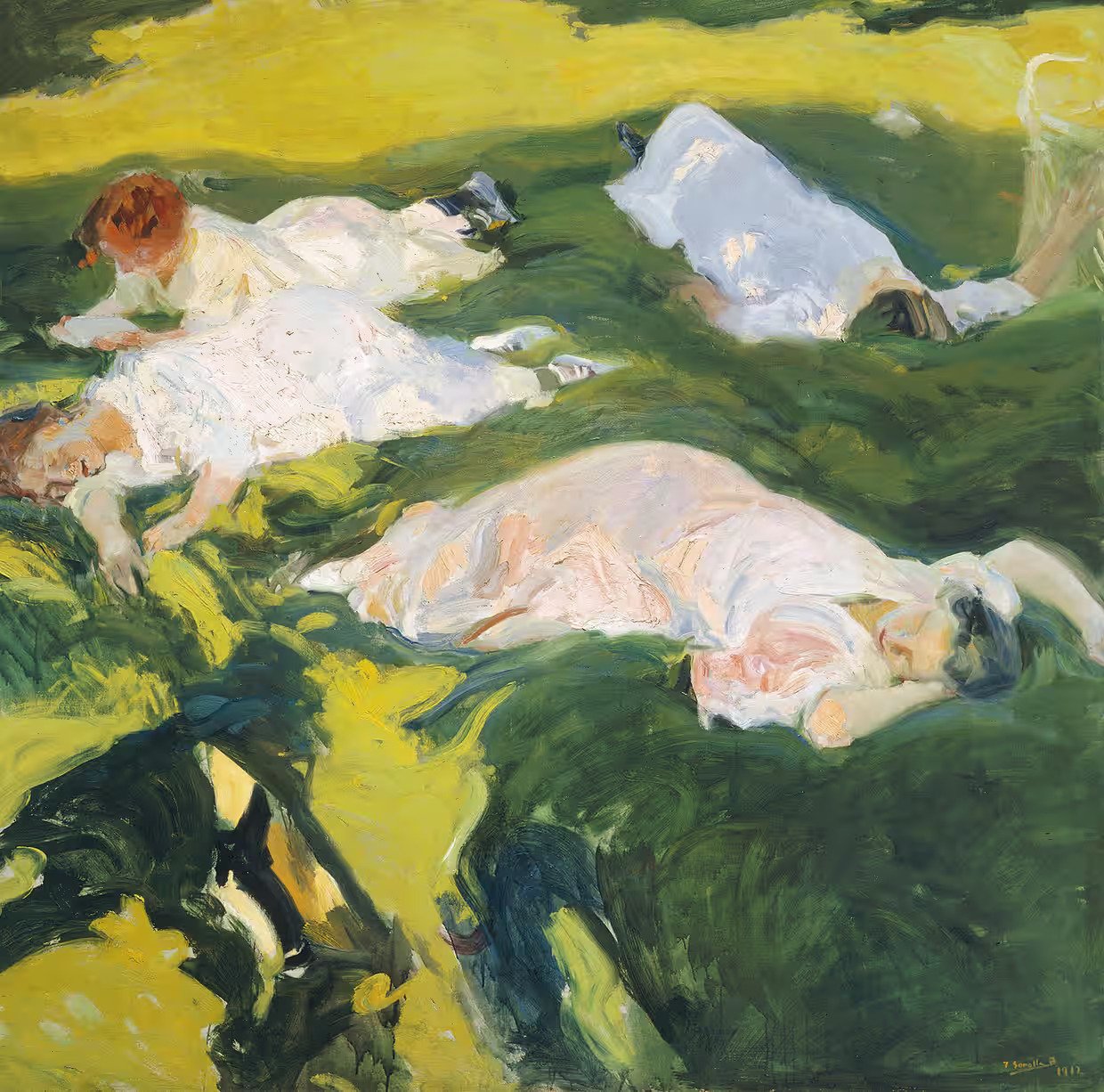Joaquín Sorolla, 1863-1923
By Zachary Vincent
Sewing the Sail, 1896, oil on canvas
On a week when so many students from the University of St Andrews will flock to the beaches of the Mediterranean to soak up its incredible light, it is worth remembering the artist Joaquín Sorolla y Bastida, born 27th February 1863. Following large exhibitions of the artist’s work at Madrid’s Museo del Prado in 2009 and London’s National Gallery in 2019, a debate remains about the celebrated ‘Spanish Master of Light’ and his place in the art historical canon. Should he be remembered as a student of Social Realism, as an Impressionist biographer of modernity, or as a pioneer of luminist abstraction? Perhaps there is a way for Sorolla to be all these things. Regardless, he was a prolific artist who left a mark not just on Spain but on a generation of western audiences who were drawn to his works for their unquestionable charisma and skill.
Joaquín Sorolla y Bastida was born in Valencia, and, despite early familial tragedies, his young life reads like a fairy tale. Showing great talent and exhibiting in Madrid while still a teenager, Sorolla travelled around Spain, Italy, and France to study art. His exposure to the Impressionists and Social Realists were particularly inspiring, and he returned to Spain to begin trying his hand at capturing his perception of Spain. His 1888 marriage to Clotilde García del Castillo brought the couple nothing but joy, their passionate love letters even late into their marriage surviving as proof.
Sorolla’s career was a story of rise and rise. Milestones include the incredible popularity of his Return from Fishing (1894, oil on canvas), which was a hit at the Paris Salon the year after its painting. Sewing the Sail (1896) was Sorolla’s next work to achieve major international acclaim, so impressing the visitors to the 1905 Venice Biennale that the work was purchased by the city of Venice. The early twentieth century also saw Sorolla travel several times to the United States, where his work achieved great popularity. He was commissioned by the Hispanic Society of America in New York to paint a series on Visions of Spain (1911-1919), murals for the Society’s Library depicting regional Spanish traditions. The murals, though, were left uncompleted when Sorolla suffered a stroke in 1923 and was in ill health until his death in 1923. His huge public funeral in Valencia was a testament to the artist’s popularity and importance in his home nation.
Sad Inheritance, 1899, oil on canvas
Sorolla’s style showed significant variation across his career. The aforementioned Sewing the Sail demonstrates the influence of Manet and the French Impressionists upon the artist, the fluid movement and ephemerality of the communal scene reflected in the loose brushwork and sensorial focus of the composition. This stands in contrast to what critics have argued is a Social Realist theme present in Sorolla’s work, characterised by its depiction of the less fortunate in contemporary Spain. Sad Inheritance (1899) fits into this category with its name and its subversion of expectations for traditional ‘frolicking’ beach scenes. A third possibility, that of Sorolla as a pioneering abstract painter, is evidenced in The Siesta of 1911. This late-career work blurs the lines between light, colour, form, and perspective. Its freedom and avant-garde aesthetic have inspired critics to describe it as “reaching beyond impressionism into dazzling abstraction”.
The Siesta, 1911, oil on canvas
Perhaps the apparent tensions within Sorolla’s work can be best understood in the context of Spain in the nineteenth and early-twentieth centuries. Sorolla’s own move from Valencia to Madrid is demonstrative of the increasingly polar coexistent Spains of the era – one shrinking, rural, and traditional, the other growing, urban, and ‘modern’. These trends birthed competing reactions among Spanish and international spectators who wanted either to preserve a vision of traditional Spain or look out for those continuing to suffer as quality of life changed with modernity. The art of Joaquín Sorolla y Bastida attempted to do both, operating simultaneously in a uniquely Spanish and a larger, western artistic context. The beautiful and diverse art left behind by Sorolla is a window into this time of change, continuity, and artistic innovation.
Bibliography
Cumming, Laura. “Sorolla: Master of Light Review – Sunny Side Up”. Guardian. Published 17 March 2019. Sorolla: Spanish Master of Light review – sunny side up | Art | The Guardian.
“Exhibition: Joaquín Sorolla”. Museo del Prado (website). Accessed 20 February 2024. Joaquín Sorolla (1863-1923) - Exhibition - Museo Nacional del Prado (museodelprado.es).
“What You Need to Know About Joaquín Sorolla”. National Gallery (website). Accessed 20 February 2024. What you need to know about Sorolla | Sorolla: Spanish Master of Light | National Gallery, London.
Wullschlager, Jackie. “Boldness and Brilliance: Joaquín Sorolla at the National Gallery”. Financial Times. Published 14 March 2019. Boldness and brilliance: Joaquín Sorolla at the National Gallery (ft.com).



